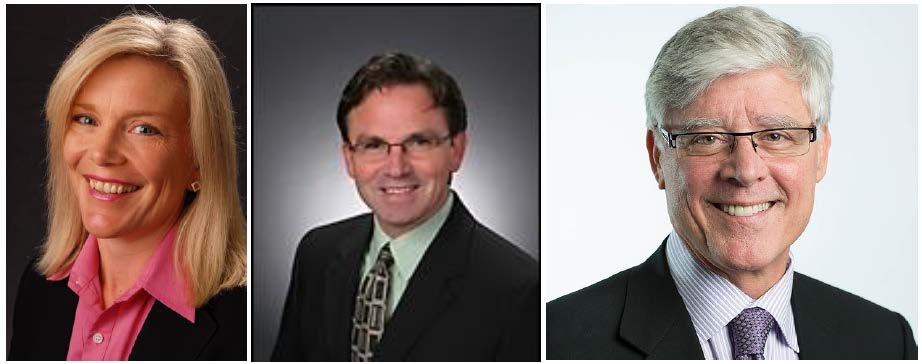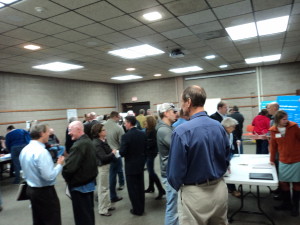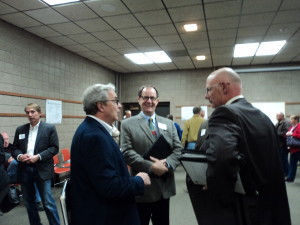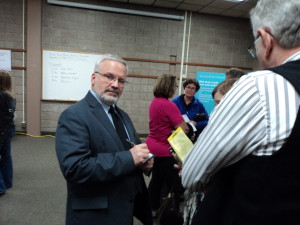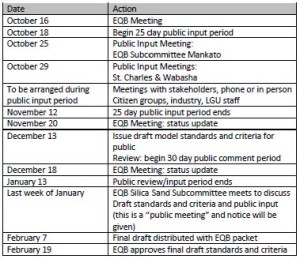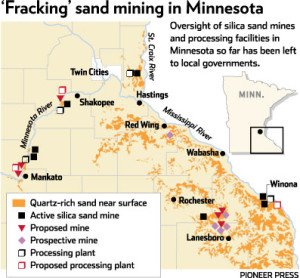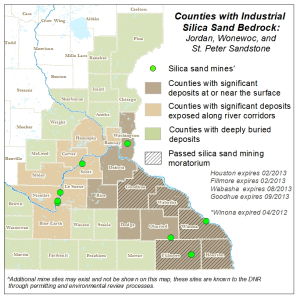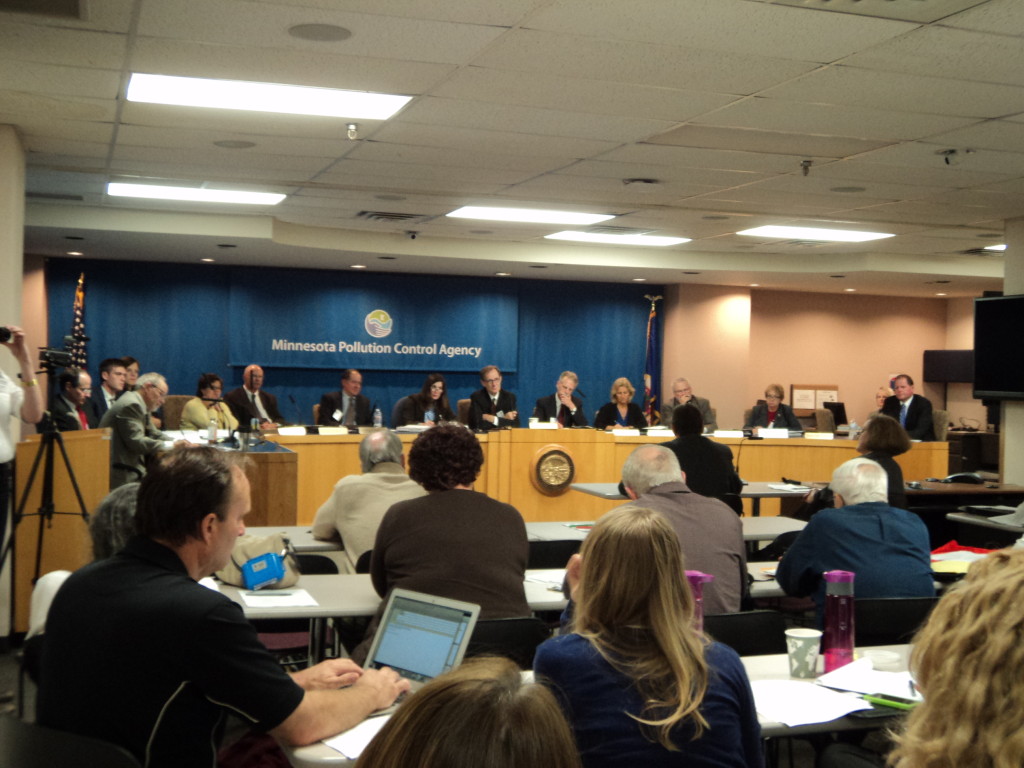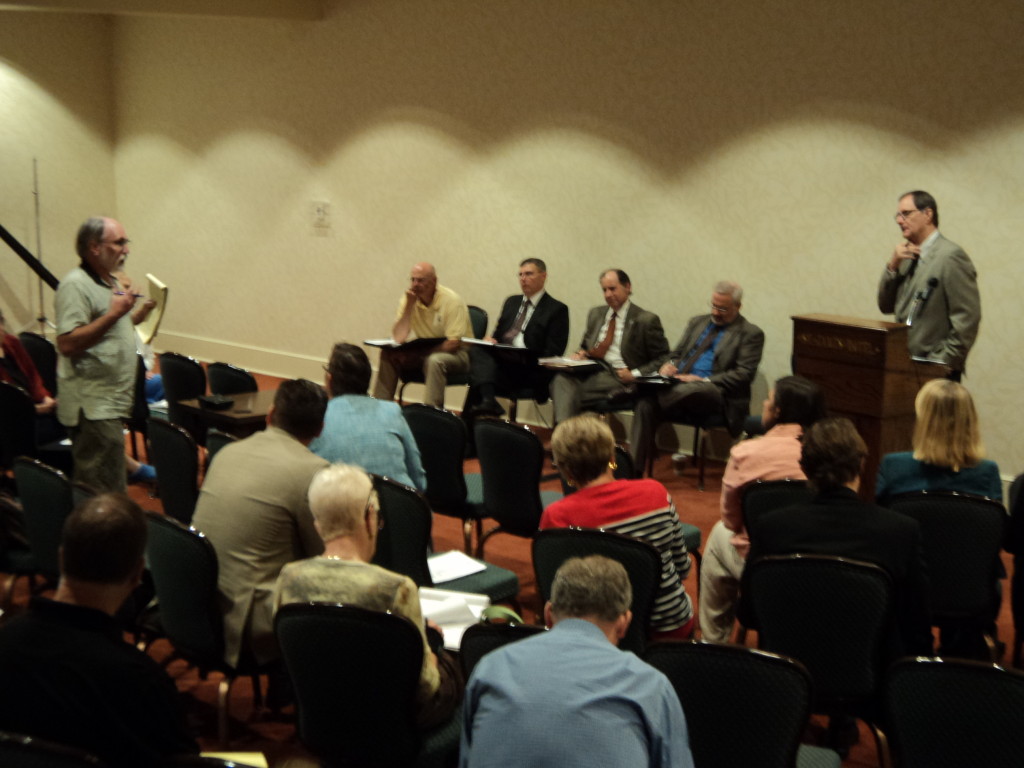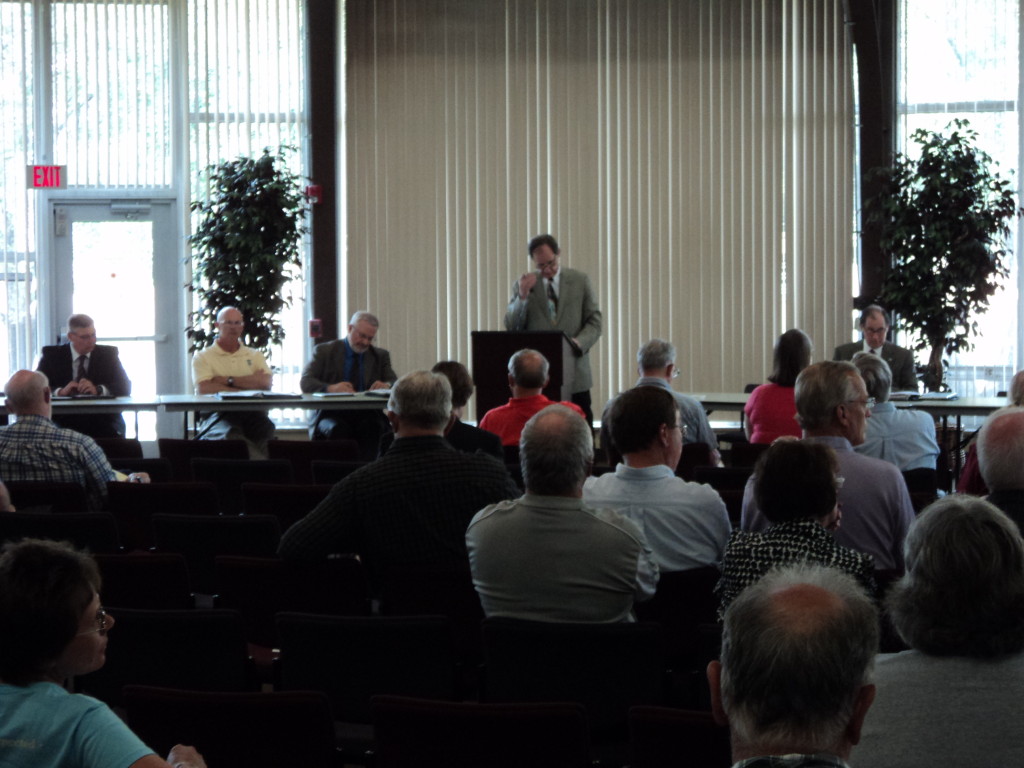Red Wing Citizens Assembly last night
September 12th, 2017

Last night, the Red Wing Citizens Assembly report was presented to the Red Wing City Council:
The video isn’t posted yet, though last night’s Library Board meeting is. ??? Will post that video when it shows up.
I’d had a particular issue that I want addressed in Red Wing, that of ethics in government, particularly development of a culture of ethical behavior, where people would raise whether there are conflicts of interest voluntarily, and these potential conflicts are sufficient to recuse from discussion and votes on an agenda item/issue. What’s happened that I’ve observed in this town is that there’s no recognition or acknowledgement of conflicts, and it takes harsh exposure, press coverage, and resignation. It doesn’t need to be that way, especially in a small community where there are so many ties, conflicts are to be expected, and the City needs to learn how to handle them.
Letter: Strengthen the city Code of Conduct
As a member of the Red Wing Citizens Assembly, I’m thinking more formally about public policy. As frequent participants in local issues, representing groups and members of the public, and as individual residents, Alan and I are particularly interested in Red Wing’s Code of Conduct. It’s a company town in many ways, with undue corporate influence.
Compared to that of the Public Utilities Commission where I practice (Minn. R. Ch. 7845), Red Wing’s Code of Conduct is inadequate. Under PUC Code, commissioners “shall behave in a manner that promotes public confidence in the integrity and impartiality of the commission’s decision-making process,” and prohibits “… any action that might result in or create a conflict of interest or the appearance of impropriety… .” Red Wing’s Code gives too much wiggle room.
Remember removal of Mayor Dennis Egan? Why was resignation even a question given the direct conflict of interest and sand issues on the city agenda at the time?
How many City Council members are financially connected to Xcel Energy, as employee, contractor or with business ties? Xcel matters are regularly before the council, i.e., LabUSA “ash mining” (Full disclosure: I represented in limited scope neighbors challenging that project), nuclear issues, utility personal property tax revenue, and the city’s legislative agenda. How does the city balance Red Wing’s interests with Xcel’s interests?
3M/Capitol Safety agreed to create 40 new jobs in exchange for a $500,000 state MIF Loan and $284,677, 100 percent city tax abatement, for the new building. 3M didn’t comply by the deadline, nor within the three-month grace period, and now they’re six months overdue. The public is paying over $19,000 per job, Red Wing’s share over $7,000 per job. The council granted an extension without penalty, with no disclosure of how many jobs 3M fell short. 3M is moving jobs around — why not to Red Wing? Shouldn’t tax be assessed during noncompliance, not abated? An “extension fee” of at least $19,000 per job not created by the deadline? How is extension, with no consequence, in the public interest?
These are just a few examples. A few thoughts for improvement:
• The Red Wing Code of Conduct should require full disclosure of employment and contracting ties, in campaign information and city website biography. For each agenda item with a potential conflict, council and commission members should be queried via roll call about conflicts and interests with their response on the record.
• The administrator’s council packet should review for each agenda item the “city interest,” “applicant interest” and “public interest” for consideration.
• The Code of Conduct should require full disclosure and recusal from discussion and decision of any council or commission member who is employee or contractor or has business dealings with a party to an agenda item.
• The City Council needs education on fiduciary responsibility, protection of city resources and public versus private interest.
City of Red Wing, revise the Code of Conduct. Give it some teeth.
Carol A. Overland and Alan Muller
Red Wing
Three Musketeers? Three Stooges?
June 30th, 2015
Oh… My… DOG! Imagine Julie Jorgensen, Dennis Egan, and Mark Andrew, all for one, and one for all! Where does the public fit in?
I love solar, but with these three, their track records, lobbying shenanigans, and their public project and public money magnetism, I’m going to take a very careful and skeptical look.
More solar could be coming
Julie Jorgensen (Julie Jorgensen CV ) was a Chief co-conspirator in the Excelsior Energy Mesaba Project, thankfully now virtually defunct (discounting its zombie qualities. For more information go to www.legalectric.org and search “Excelsior Energy” or “Mesaba Project” or “Julie Jorgensen” or “Tom Micheletti” or “boondoggle” or “coal gasification” or “carbon capture” or “sequestration” or “IRRRB” or just “IRR” or “Iron Range Resources” or “Renewable Development Fund” and of course go to the Citizens Against the Mesaba Project www.camp-site.info and settle in for a good read. And from a little over a year ago — zillow.com says it sold, but who knows the real story:
Tom & Julie’s house is for sale February 2nd, 2014
And this on the money they sucked out of the IRRB… how much has been written off? And then there’s the state’s “Renewable Development Fund” Again! Legislative Auditor on IRRRB! April 19th, 2015
And Dennis Egan, he’s front man on solar projects HERE? In Red Wing??? Well, for sure he’s no longer ED of Minnesota Industrial Sand Council (that’s a google cache, I got a 404, “the site is crashed and should be repaired.” It might be different by the time you see this, I’ll check tomorrow).
April Fool on April Fools Day! April 1st, 2013
Mayor Egan Resigns March 7th, 2013
Where’s the Mayor’s resignation letter? March 4th, 2013
7p TONIGHT – Red Wing City Council Meeting February 25th, 2013
Mayor Egan to resign? Sand mining bill introduced! February 23rd, 2013
Last Mayor Egan post before Council meeting February 11th, 2013
KARE 11 turns up the heat on RW Mayor Egan February 7th, 2013
Red Wing Mayor Egan exposed February 6th, 2013
Mayor Egan – the voice of frac sand mining! February 5th, 2013
And then there’s garbologist Mark Andrew, champion of the HERC garbage burner in downtown Minneapolis.
Here’s some info about his garbage burner:
At a Mayoral debate, he did an inventive Al Gore:
And Mpls. garbage divides mayoral hopefuls – MPR News. Needless to say he didn’t get the job.
And now, these three are selling solar in the Red Wing area. What are they cooking up? Read the fine print very carefully, and keep all the public money tied down.
EQB Standards & Criteria in Mankato
October 25th, 2013
“Minnesota’s Finest Sands.” So says Jordan Sands, the big silica sand mining operation in the Mankato area. And in Mankato we were today, for the EQB meeting about Standards and Criteria:
And Jordan Sands, Unimin, etc., were putting out a lot of dough and a lot of time in their multiple representatives at the EQB meeting in Mankato at the Blue Earth County Library. Coming it, it looked well attended. But after a look around, it was apparent that at least half were industry toadies, like my buddy Dennis Egan:
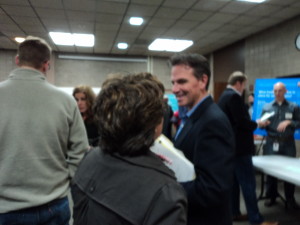 On the other hand, several direct neighbors of the recently permitted Jordan Sands project, and a township official were there and spoke eloquently of their concerns. Scott County’s environmental crew (3) was there and told of their silica sand mine permitting experience.
On the other hand, several direct neighbors of the recently permitted Jordan Sands project, and a township official were there and spoke eloquently of their concerns. Scott County’s environmental crew (3) was there and told of their silica sand mine permitting experience.
I was handing out flyers to help people put in Comments on point about the statutory Standards and Criteria, specific ones that might be meaningful and might be taken into account — it’s hard to get people focused. But my ink jet ran out so I only had a handful. Here it is:
Ag Commissioner Fredrickson and MPCA Commissioner Stine were on hand, as well as DNR Commissioner Landwehr, and others too:
It was a public meeting, in an open house and also presentation/Q&A format where the EQB was soliciting input for the silica sands Standards and Criteria, as directed by last session’s 116C.99:
The standards and criteria must include:
(1) recommendations for setbacks or buffers for mining operation and processing, including:
(i) any residence or residential zoning district boundary;
(ii) any property line or right-of-way line of any existing or proposed street or highway;
(iii) ordinary high water levels of public waters;
(iv) bluffs;
(v) designated trout streams, Class 2A water as designated in the rules of the Pollution Control Agency, or any perennially flowing tributary of a designated trout stream or Class 2A water;
(vi) calcareous fens;
(vii) wellhead protection areas as defined in section 103I.005;
(viii) critical natural habitat acquired by the commissioner of natural resources under section 84.944; and
(ix) a natural resource easement paid wholly or in part by public funds;(2) standards for hours of operation;
(3) groundwater and surface water quality and quantity monitoring and mitigation plan requirements, including:
(i) applicable groundwater and surface water appropriation permit requirements;
(ii) well sealing requirements;
(iii) annual submission of monitoring well data; and
(iv) storm water runoff rate limits not to exceed two-, ten-, and 100-year storm events;(4) air monitoring and data submission requirements;
(5) dust control requirements;
(6) noise testing and mitigation plan requirements;
(7) blast monitoring plan requirements;
(8) lighting requirements;
(9) inspection requirements;
(10) containment requirements for silica sand in temporary storage to protect air and water quality;
(11) containment requirements for chemicals used in processing;
(12) financial assurance requirements;
(13) road and bridge impacts and requirements; and
(14) reclamation plan requirements as required under the rules adopted by the commissioner of natural resources.
Here’s a chart to give people a format and idea how to submit comments — for this exercise, we need to file specific ideas for particular standard/criteria (in the middle column), and it’s very helpful to list whatever supporting documentation or authority you have for this criteria (right hand column), such as a local ordinance, or health studies:
Below is a prior comment I’d sent in for Winona County CASM with some thoughts tossed together — well, at least the EQB used the format I proposed!
Now, back to process — here’s the schedule established at the most recent EQB meeting (last week), Will Seuffert said he was working on that earlier this month…
(ja, the light in there was awful) …and voila, the schedule, here it is:
EQB’s sand site: http://silicasand.mn.gov/
I’m concerned about the focus on SE Minnesota, evidenced by the statutory language, and listening to the words used by the toady from Unimin, that “SE IS UNIQUE” and so it is special, and implying that an open door along the Minnesota River is just fine… NOT! Earth to Mars, frac sand mining is NOT unique to SE Minnesota. Here’s the map:
and from the DNR:
Think about where the major spill has been — INTO THE FEDERALLY PROTECTED WILD & SCENIC ST. CROIX RIVER!! Not even close to SE Minnesota. Where did they start up a processing/transport facility with no permits? Harris, MN (is Loren Jennings involved in this???).
And that much is clear from the many who did show up on a Friday afternoon in Mankato, by the permits issued already, Jordan Sands in Mankato, and as addressed by the Scott County environmental guy and other staff people who had just completed an intense permitting process there. Scott (Frenchette?), Scott County, raised a few state statutes, such as Minn. Stat. 103H.01 focused on ground water degradation, 116D.04, Subd. 6 (you all recognize MEPA by now, EH?), 103I and Minn. R. 7060 regarding protection of ground water. He asked about these statutes, all related to state permits, and rhetorically wondered what a local government is to do, is there protection offered in these statutes?
Time to get to work!
Send comments on Standards and Criteria to:
silicasand.eqb@state.mn.us, and copy:
Will.Seuffert@state.mn.us
jeff.smyser@state.mn.us
bob.patton@state.mn.us
kate.frantz@state.mn.us
Deadline is November 12, but the sooner the better, give them some time to incorporate in your thoughts!
EQB meeting on frac sand mining
September 21st, 2013
Wednesday was the EQB’s monthly meeting, and this one was all about frac sand mining. There are TWO things going on here. The EQB Standards and Criteria, which is not a rulemaking, and then four mandatory rulemaking tasks, two at EQB, and one each at DNR and MPCA. The EQB was supposed to deal with, at some level, both of these assignments.
One is the model Standards and Criteria, “serving suggestions” to be adopted by local government, and the other is four rulemaking tasks at three agencies:
Sec. 105. RULES; SILICA SAND.
(a) The commissioner of the Pollution Control Agency shall adopt rules pertaining to the control of particulate emissions from silica sand projects. The rulemaking is exempt from Minnesota Statutes, section 14.125.
(b) The commissioner of natural resources shall adopt rules pertaining to the reclamation of silica sand mines. The rulemaking is exempt from Minnesota Statutes, section 14.125.
(c) By January 1, 2014, the Department of Health shall adopt an air quality health-based value for silica sand.
(d) The Environmental Quality Board shall amend its rules for environmental review, adopted under Minnesota Statutes, chapter 116D, for silica sand mining and processing to take into account the increased activity in the state and concerns over the size of specific operations. The Environmental Quality Board shall consider whether
the requirements of Minnesota Statutes, section 116C.991, should remain part of the environmental review requirements for silica sand and whether the requirements should be different for different geographic areas of the state. The rulemaking is exempt from Minnesota Statutes, section 14.125.
++++++++++++++++++++++++
Minnesota Department of Natural Resources_Notice of Rulemaking
Both require public input, both have not had enough! It’s our job to make that happen, to get local governments, grassroots groups, and members of the public hollering, kicking and screaming with specific suggestions for developing the protections for us, our communities and natural resources of the areas affected by frac sand mining.
The EQB staff proposed 500 foot setbacks from homes – here’s what that would look like at the capitol (given to me by Donna Buckbee, made by Kelly Stanage!) with the setbacks proposed:
Here’s the EQB packet:
As you can see from my Sept 7 comments above, I was not at all happy with staff Jeff Smyser’s comments about an Advisory Committee, from what he said, he was either clueless, misdirecting/misinforming the EQB, or both.
From the packet, p. 6 of 34:
i. Staff requests Board direction on a question that arose at the August 2nd public meetings.
Members of the public expressed interest in a citizen committee to participate in the rulemaking. It is not clear how a citizen committee would affect the rulemaking process laid out in Minn. Statutes Ch. 14. A multi-step public review and comment process is already required in that statute and we just completed the preliminary step. Rulemaking is essentially creating law: Minnesota Rules have the force and effect of law. Rulemaking is a lengthy process, averaging about two years.
“It is not clear…” NO NO NO! For someone in Smyser’s position, there’s no excuse for statements like this. The statute is very clear about the agencies’ authority to appoint an Advisory Committees and how an advisory committee it would affect rulemaking – it improves the output by providing input before the draft rule is issued:
Not good… and WORSE when Smyser repeated that line at the meeting, I almost got up and hollered, but I got a chance to make a comment during the meeting, so I waited until then. Earth to EQB, Advisory Committees are common, the norm, in rulemaking proceedings, so get with it!! You’ve got a rulemaking mandate and you need to get moving on it.
The staff had asked for “direction” on a rulemaking committee in their comments in the packet, and the Board never did say anything about it, no discussion and no recommendation.
The meeting got off to a hilarious start, for me anyway! I’d found a table in the back, a good observation location, and plopped my stuff down and wandered around a bit, signing up to speak, and a bit of meet & greet. When I went back, who do you think had taken up the other three spots at my table? Yes, the flacks from the Industrial Sand Council (who as lobbyists are listed under Aggregate Ready Mix Ass.) Peder Larson, _______, and…. (drum roll here!) Dennis Egan right next to me!
Sally Jo Sorensen thinks he was doing a grumpy cat at the meeting
Grumpy? NO ONE was happy with the outcome of that meeting. And that’s not only how it was from our table at the back of the room! Egan is just doing what lobbyists, and really all of us in the room, were doing — advocating for our interests. The good news is that now it’s clear where Egan’s interests are. Disclosure is everything, and failure to disclose was his problem.
The first Industrial Sand speaker was dreadful, going on and on, naming all the folks on EQB that they’d met with, lording it over about their special access to these officials — time to exercise some scripting because this guy clearly does NOT understand the impact of his statements alluding to exertions of their influence (ex parte? Unfortunately I can’t find rules about that for EQB), and they’re really pissing off folks in the audience, and probably making their EQB targets uncomfortable too. If he worked for me, I’d put him on the sidelines.
After some ice breaking with Egan (I suggested that in a photo op we could strangle each other!), we did find some common ground, such as incredulous snorts over Chair Fredrickson’s asking what the deadline would be for the “second draft” of Standards and Criteria. Second draft?? Chair, the statutory deadline for finished product is October 1st. Oh well, now they’re talking about February. Bizarre, guess the statute doesn’t mean anything. Guess that also means we’re not getting to public review and comment any time soon… which means WE’D BETTER COMMENT NOW! Before they issue anything for public comment.
Egan was not testifying Wednesday, and he talked publicly only via Stephanie Hemphill, MPR:
About the EQB’s failure to meet the October 1 deadline, that was pretty much the opinion of all of us in the audience, Sen. Matt Schmit too!
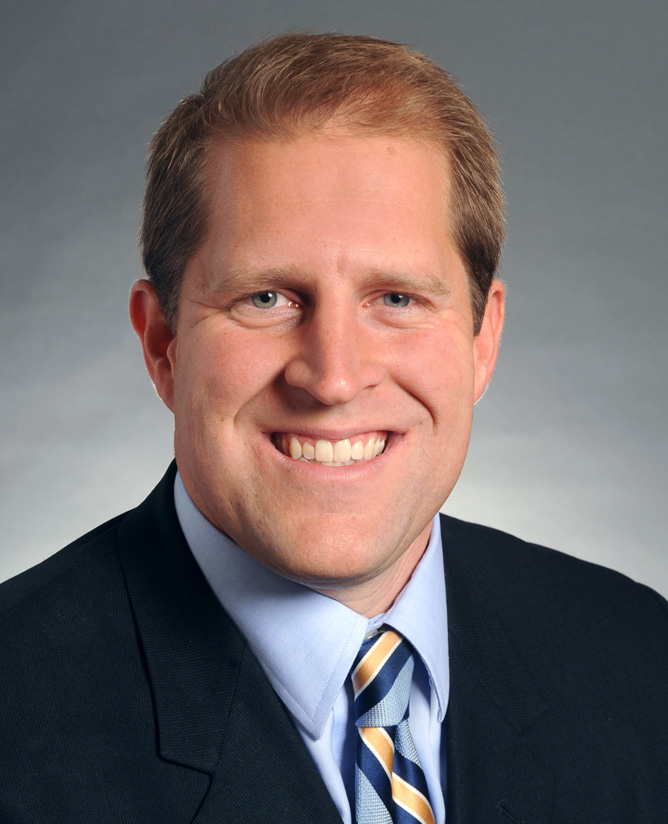
Obviously more time is needed to do a good job, and the EQB’s out-of-the-gate performance left a LOT to be desired. But about that deadline, see Minnesota Session Laws, Ch. 114:
(a) By October 1, 2013, the Environmental Quality Board, in consultation with local units of government, shall develop model standards and criteria for mining, processing, and transporting silica sand. These standards and criteria may be used by local units of government in developing local ordinances. The standards and criteria shall be different for different geographic areas of the state.
So let’s get some meetings scheduled around the state, the areas of the state affected by silica sand mining, present or proposed.
And once more with feeling, there are TWO things going on here. One, the EQB Standards and Criteria, which is not a rulemaking, and then secondly, four mandatory rulemaking tasks, two at EQB, and one each at DNR and MPCA.
Yesterday in Red Wing and Winona
August 3rd, 2013
Yesterday two meetings were held by the the Environmental Quality Board, Dept. of Natural Resources, Minnesota Pollution Control Agency, Dept. of Health, and Dept. of Transportation, and the Gov.’s Ellen Anderson, joined by a large crew of agency staff and a good sampling of county, city and township officials — good to see a crew from Red Wing and Goodhue County. The MPCA’s Stine has been on Alan’s list for some time, and we’ve been dealing with him a lot lately, the EQB and Ellen Anderson too, and I think it helps to be able to have some history with them and get right to business.
A good time was had by all. The agency reps appeared more engaged and tracking than they usually are, and you could dance to it — I’ll give it a 98. But come on… not even coffee… granted I was up at “too early o’clock” to finish my handout, but… zzzzzzzzzzzz…
Notice of these meetings was a problem, or rather, lack of notice, because this was a stage where public participation is crucial — they need to know we care and can contribute. They wanted it kept to “local governments,” but that doesn’t cut it, this is a public meeting about an immediate and high-profile issue. It must be open. There’s no excuse for keeping it under wraps.
The most important thing I heard was repeated comments by Jon Linc Stine, MPCA, in particular, was whether local governments had taken advantage of the new legislative option to extend a moratorium. At the Red Wing meeting, Goodhue County had Lisa Hanni responding for the county. Hanni was dodging and weaving on that moratorium question, stating that they acted based on the law as it was, that they had to get their work done on the timeline of their moratorium. I’d sure have appreciated the addition of a simple statement that the County would take that suggestion of extending the moritorium under advisement!!! State agency officials have a typically hands off approach to local units of government, there are turf issues here, but the repeated questions and statements encouraging extension of the moratorium are as close to a direct statement as I’ve ever seen. There was encouragement to check with attorneys about extension, and encouragement for local governments to participate in this state process — they’re looking for input — so let’s give it to them!!!
Prior to the meeting, I drafted a letter and proposed standards and criteria, off the cuff suggestions to get the ball rolling. In the letter, there were two important requests:
- Appointment of a rulemaking Advisory Committee.
- No state permitting of silica sand mines until Standards & Criteria AND rules are completed.
Here are the Comments of Winona County Citizens Concerned About Silica Mining:
CASM Comments August 2, 2013
At the Red Wing meeting, I was particularly encouraged to note that Richard Peterson from a township in Le Sueur County was there to discuss what it’s like to live with a mine next door. Specific points were that despite a provision for an “annual review,” the community received no notification that the annual review was happening! Blasting was an issue because they are blasting constantly. Reclamation is not keeping up, and they’re piling up large piles, 600 FOOT PILES, and not capping it, so the wind is blowing it all around. I’m glad someone near the Minnesota River mines was here, and hope the state will schedule meetings there, and also near the St. Croix mines. It’s not just SE Minnesota, folks, this is a far broader problem (map from StPPP)

James Riddle spoke at the Winona meeting. He’s from Winona, and has recently been appointed to the MPCA Citizens Board, and had quite a back and forth regarding trout streams, protected areas, and groundwater.
One thing they’ll be doing is providing notice to local governments, AND I HOPE THE PUBLIC, of pre-application meetings with the agencies so that local governments will have a heads up. That’s important because if there is an application to a local government, there’s only a 60 day window to act, and that’s just not enough time for permit review of something with potential for such extensive impacts.
Something that came up repeatedly was counties ability to work together on road issues, to jointly institute road impact fees, and the DOT will be digging up more information about this. That’s good because road impacts is an issue mandated for Standards and Criteria development.
Also, reclamation was a recurring issue, and the importance of reclamation standards and requirements to keep up with destruction, and also to address dormancy, if the mine just sits, how long can it sit before reclamation kicks in.
It was a great relief to have the DOT COMMISSIONER there, that’s Charles Zelle. The DOT isn’t directly involved in rulemaking mandated in the statute, but transportation is such an important issue here with potential for major impacts. And the Commissioner is a better choice to represent the agency. At past meetings we’ve seen that awful Dave Christian, who was a frac sand mining toady, actively advocating for sand mining (he said he has family or friends involved in mining … own land? An inappropriate role as he wears his DOT hat. Perhaps, as with Dennis Egan, he should be fired.). Zelle was up on some issues, and others he needs to do some research, and particularly he should take a drive through Winona on the haul routes, look at the piles, and head down Highway 76 between Houston and Caledonia during hauling times!
Here’s the write up of the meetings in the Roch PB:
State enters silica sand fracas
John Weiss, weiss@postbulletin.com | Posted: Friday, August 2, 2013 9:30 pm
RED WING Louy Stambaugh wants state agencies to help stop many trucks loaded with silica sand from pounding past her Lake City home.
“We need more help, we need some more leverage because we’re small,” she said.
Tthe EQB is made up mostly of heads of the agencies, including those at the Friday meetings.

